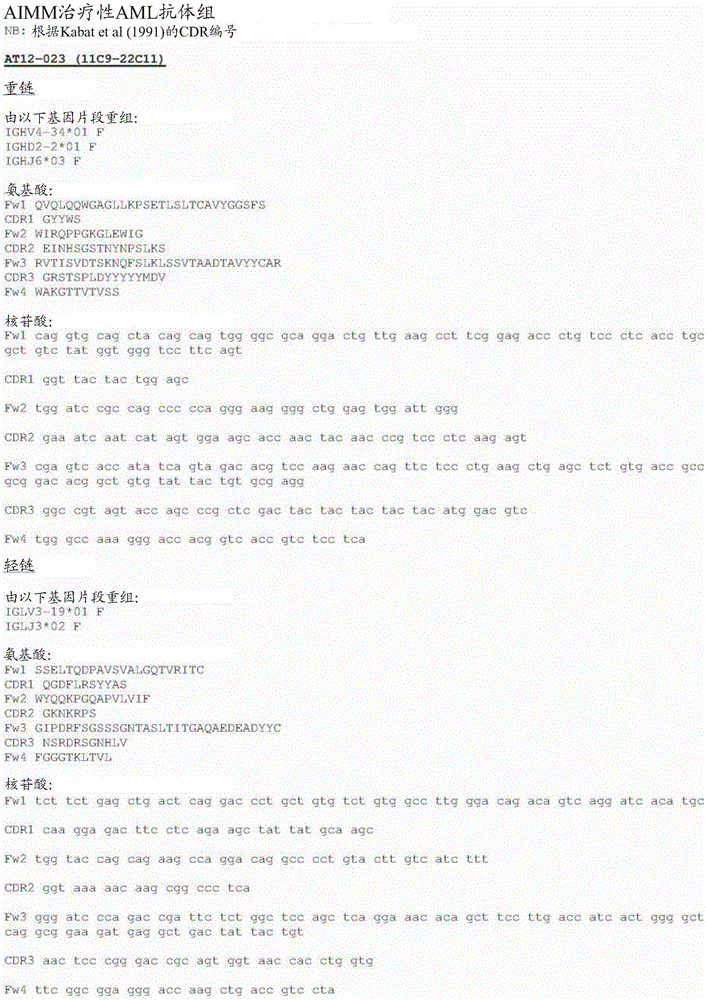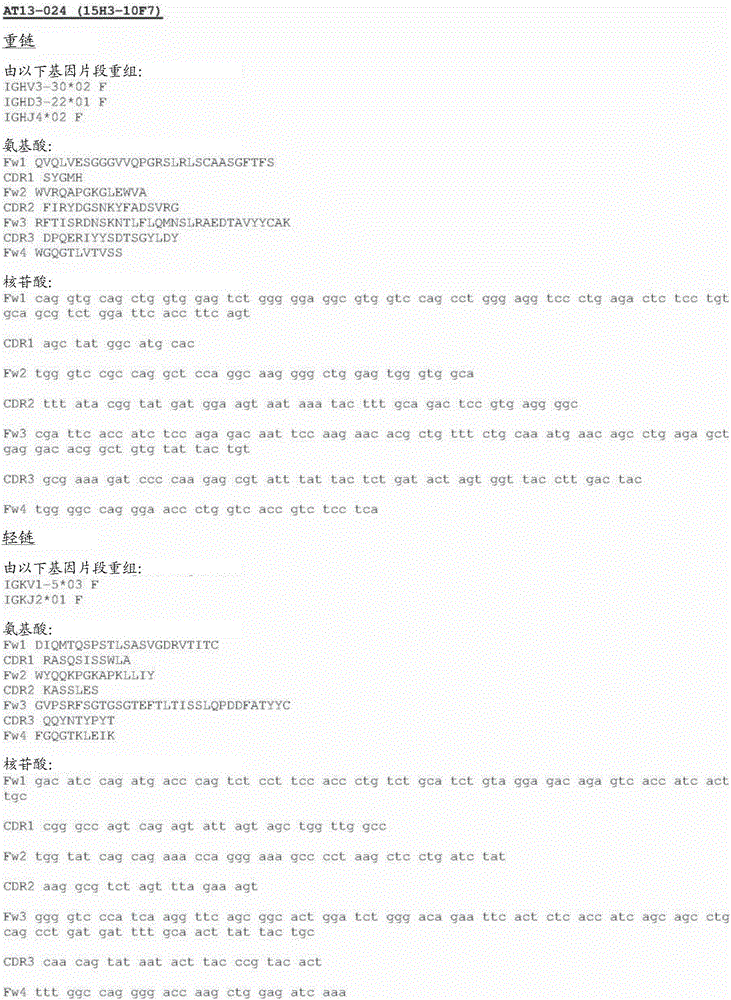Means and methods for counteracting myeloproliferative or lymphoproliferative disorders
A technology of antibodies and functional equivalents, applied in the fields of medicine and cancer treatment, immunology, and biology, can solve problems such as increasing the recurrence rate of diseases
- Summary
- Abstract
- Description
- Claims
- Application Information
AI Technical Summary
Problems solved by technology
Method used
Image
Examples
Embodiment 1
[0402] Materials and methods
[0403] Patient and Healthy Human Materials
[0404] The study protocol was approved by the Medical Ethics Committee of the Academic Medical Center. All participants signed an informed consent form. We selected two patients who had already undergone allogeneic stem cell transplantation for AML (donor 59 received a myeloablative sibling transplant and donor 58 received a matched unrelated donor-reduced-intensity stem cell transplant ), and based on their clinical history, it can be assumed that they have developed a strong graft-versus-leukemia effect. The two SCT recipients each donated 500ml of peripheral blood as a product of one of the many phlebotomies they underwent for post-transfusion hyperferritinemia. In addition, patients who received newly diagnosed AML in our clinic agreed to donate 2 to 5 ml of bone marrow or blood containing AML blasts for antibody binding assays. Healthy bone marrow is donated by patients undergoing thoracotom...
Embodiment 2
[0449] AML-specific antibodies from a third patient
[0450] To further validate our approach and show that this anti-AML response is not exclusively female patients, we also selected a male patient. The patient ( Figure 13 ) donor 101 was diagnosed with intermediate risk AML (no cytogenetic or molecular abnormalities; FAB category AML-M5) at the age of 49 years. He received two courses of chemotherapy (cytarabine, idarubicine, amsacrine) and one course of consolidation chemotherapy (busulfan, cyclophosphamide), followed by autologous HSCT, Because there is no HLA-matched sibling stem cell donor available. Fourteen months after the initial diagnosis, his disease relapsed. He achieved complete remission after a round of high-dose cytarabine, after which he underwent reduced-intensity allogeneic HSCT (RIST-MUD) from a matched unrelated donor. Six weeks later, he developed acute GvHD of the skin, liver, and bowel appropriately responding to corticosteroid treatment (Stage ...
Embodiment 3
[0454] In vitro activity of AML-specific antibodies from Donor 59, Donor 58 and Donor 101
[0455] In Example 1, the breadth of binding of donor 59's antibodies within the AML subtype repertoire was determined (Table 3). Using the same approach, the breadth of binding of donor 58's antibody within the AML subtype lineage was also determined. The results are shown in Table 9A: The five antibodies from Donor 58 (AT13-033, AT13-034, AT13-035, AT13-036, and AT13-037) all bound to the AML-M5 cell line THP-1, as well as the AML-M5 Cell line MonoMac6. These AML-specific antibodies did not significantly bind to freshly isolated AML blasts of FAB classes M0, M1 or M4 from newly diagnosed patients. AT13-034 bound only weakly to M0 blasts. This suggests that these antibodies are specific for (at least) AML M5 blasts.
[0456] In Example 1, it was also determined that the antibodies AT12-023 and AT12-025 of Donor 59 killed THP-1 cells (Table 5 and Figure 7 ~ Figure 9 ). Subsequentl...
PUM
 Login to View More
Login to View More Abstract
Description
Claims
Application Information
 Login to View More
Login to View More - R&D
- Intellectual Property
- Life Sciences
- Materials
- Tech Scout
- Unparalleled Data Quality
- Higher Quality Content
- 60% Fewer Hallucinations
Browse by: Latest US Patents, China's latest patents, Technical Efficacy Thesaurus, Application Domain, Technology Topic, Popular Technical Reports.
© 2025 PatSnap. All rights reserved.Legal|Privacy policy|Modern Slavery Act Transparency Statement|Sitemap|About US| Contact US: help@patsnap.com



